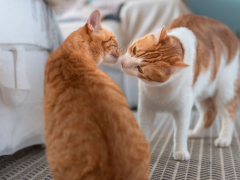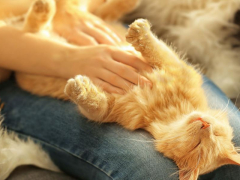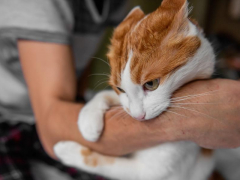
Cats do have a sense of taste, but it’s significantly different from ours. Let’s talk about your cat’s sense of taste and what makes it unique.
Like people, cats have five main senses: touch, sight, hearing, smell, and taste.
Of the cat senses, a cat’s hearing is the most powerful. Cats also have a great sense of smell. A cat’s sense of sight is mighty too, especially their peripheral eyesight (capacity to see to the sides) and ability to see movement. Lower down on the list of senses is touch, although cat’s whiskers and even their paw pads are incredibly sensitive.
Finally, we have the sense of taste.
A cat’s sense of taste is quite different from a dog’s and even a human’s. Read on to find the answers to some commonly asked questions about cats and taste.
Do Cats Have Taste Buds?
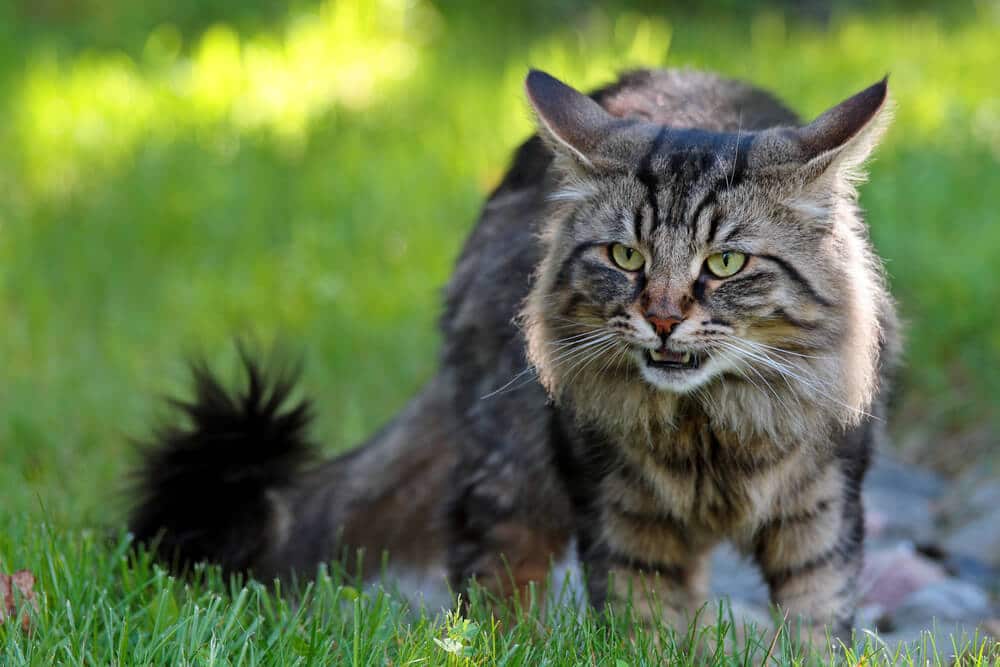
Cats have an additional scenting organ located on the roof of their mouth called the Jacobson’s organ. This cat is exhibiting the flehmen response, which allows the Jacobson’s organ to evaluate chemical messengers like pheromones and other smells.
Yes. Cats do have taste buds, although they have far fewer than dogs and humans do. However, cats and dogs have an extra scenting organ that people do not.
The Jacobson’s organ or vomeronasal organ is a structure located in the roof of the mouth that detects chemicals in the environment through ducts in the mouth and nose.
You may have noticed your cat pop open his mouth and curl back his upper lip a bit when smelling something particularly interesting. This is called the flehmen response; your cat is using his tongue to direct the scent into the vomeronasal organ.
The flehmen response and Jacobson’s organ helps cats to analyze interesting smells in their environment, especially pheromones (chemicals produced by other animals).
How Many Taste Buds Do Cats Have?

A cat has about 400 taste buds, while a dog has about 1,700. Humans can have as many as 8,000 taste buds.
What Taste Can Cats Not Detect?

Cats have different receptors for taste than people do. Domestic cats cannot taste sweet flavors. However, cats can taste something humans cannot: adenosine triphosphate (ATP), which is a compound found in meat. This comes in handy since cats are obligate carnivores (their main diet is comprised of meat).
What Tastes Can Cats Detect?
Cats can taste salty, sour, bitter, umami (savory or meaty) and adenosine triphosphate (ATP).
Can Cats Taste Sweet?

Even though cats don’t seem to have taste receptors for sweet food, some cats seem to enjoy sweets like frosting and ice cream. It’s speculated that they’re attracted to these foods’ fat content rather than their flavor.
Nope! Unlike dogs and humans, cats do not have the taste receptor needed to detect sweet flavors (the TAS1R2 gene). Scientists hypothesize that cats do not need to taste sweet things because their diet is primarily meat.
If cats lack a sweet tooth, why do some cats enjoy a lick of ice cream? It’s likely the cat is drawn to the fat content of ice cream rather than the sweet taste.
Can Cats Taste Bitter?

Yes. Cats have almost as many bitter taste receptors as dogs (cats have 12 and dogs have 15). It is believed that cats can taste bitter to prevent them from nibbling on poisonous plants.
Can Cats Taste Sour?

Yes. Like a cat’s ability to taste bitter, the ability to taste sour likely stops cats from eating toxic things.
Can Cats Taste Spicy?
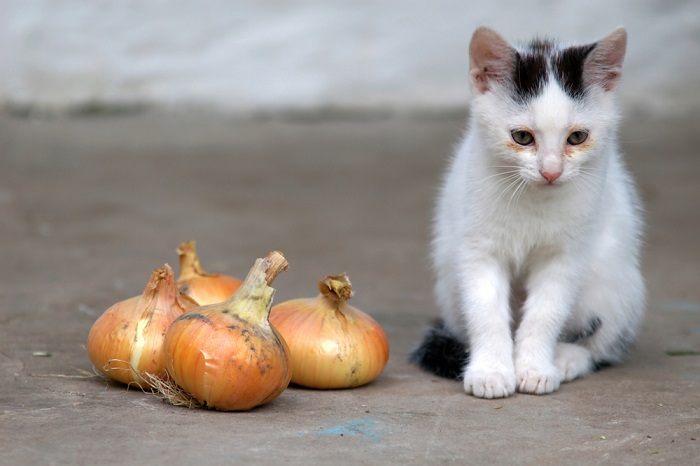
Yes, however “spicy” is not technically one of the main tastes for either cats or humans. Capsaicin, which is found in many spicy foods, produces a burning sensation in the mouth, lending spicy foods their hot “flavor.” Cats do not like spicy food, and it’s not good for cats, so stick to cat food.
In conclusion, cats definitely do have a sense of taste—one that’s well-adapted to their dietary needs.
While cats have fewer taste buds than do humans and they can’t detect sweet tastes, cats experience flavor in a unique way that shows clear evidence of their carnivorous nature.
With taste receptors that detect umami and ATP from meat and help them to avoid sour or bitter foods that might cause harm, your cat’s sense of taste is well-suited to his lifestyle as a predatory carnivore.
